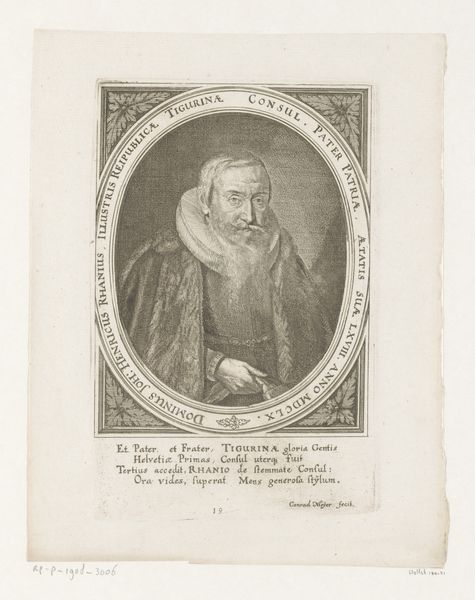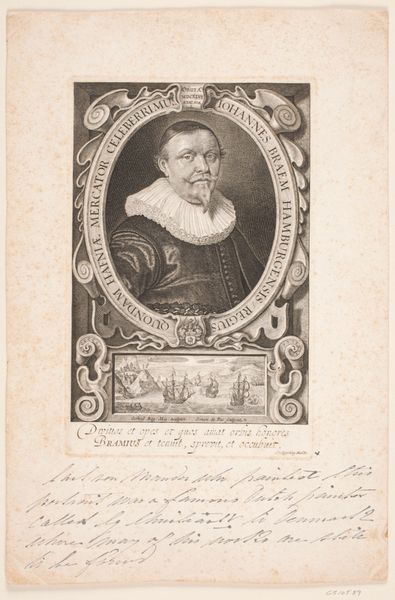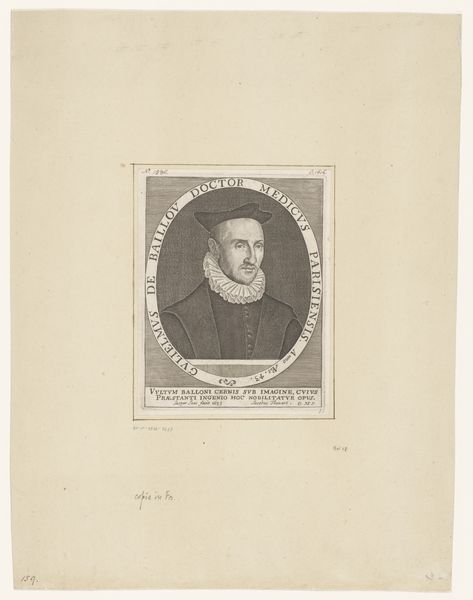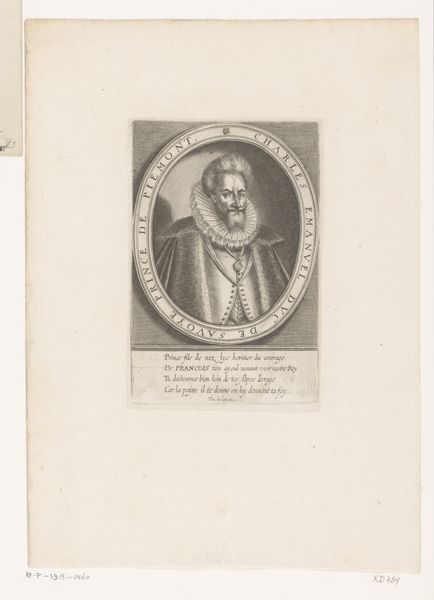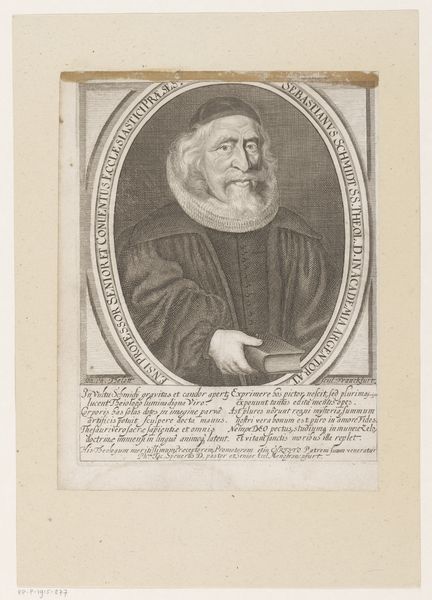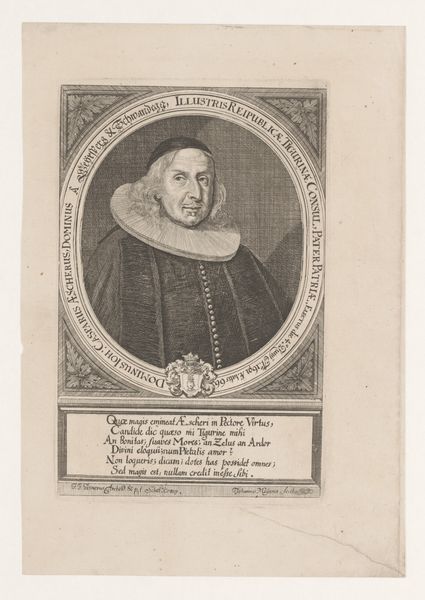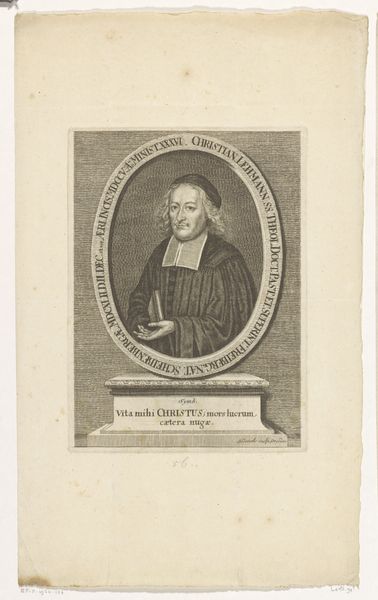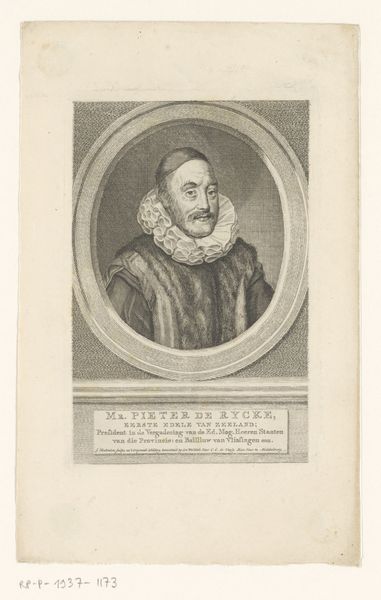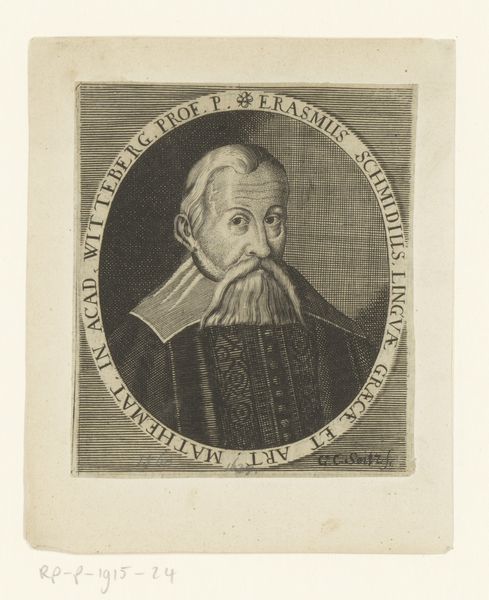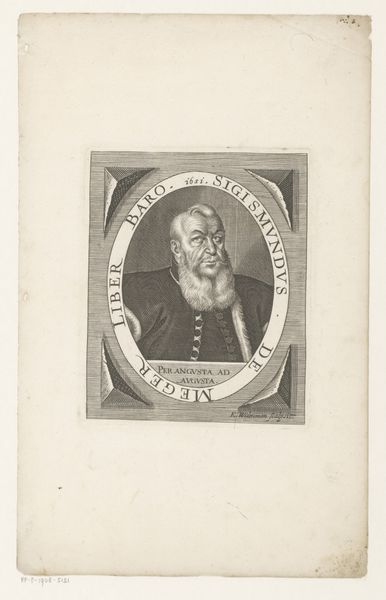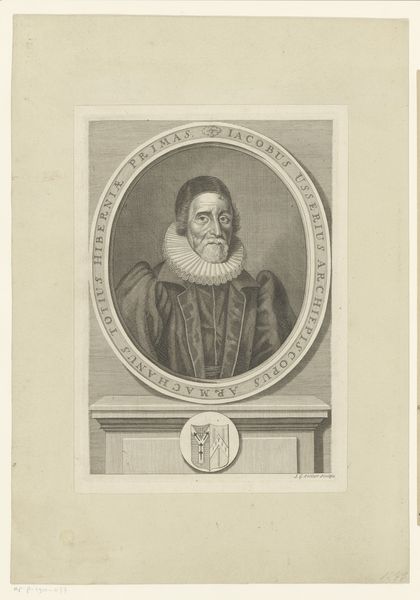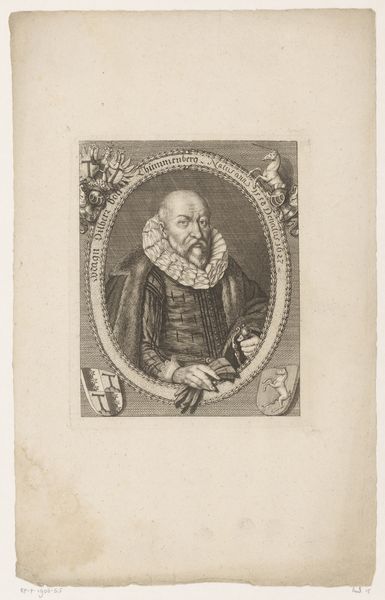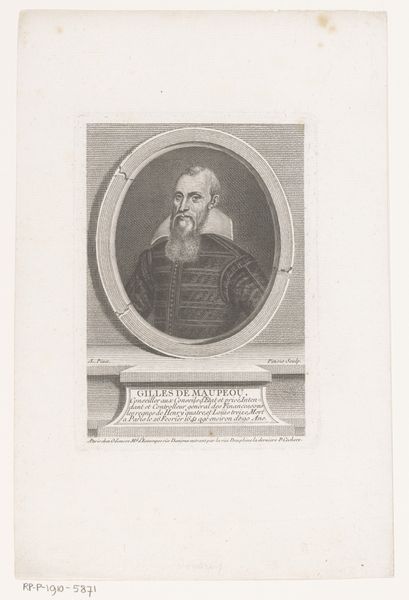
print, paper, engraving
#
portrait
#
baroque
# print
#
old engraving style
#
paper
#
line
#
history-painting
#
engraving
#
monochrome
Dimensions: height 188 mm, width 145 mm
Copyright: Rijks Museum: Open Domain
Curator: Here we have Johann Christoph Boecklin’s "Portret van Sebastian Schmidt," created sometime between 1696 and 1709. It's an engraving on paper currently held in the Rijksmuseum. Editor: Immediately, the detail strikes me. The use of line is masterful; it’s remarkable how much texture and depth he achieves with just monochrome lines. Curator: It's classic Baroque portraiture in its framing. The subject, Sebastian Schmidt, is depicted within a circular border, surrounded by text detailing his titles: professor, doctor of theology. He's memorialized here, his role as an academic very prominent. Editor: Yes, the text is crucial in grounding him within a specific intellectual milieu. Structurally, the framing and the inscription on the plinth create a very hierarchical composition. Curator: His attire too speaks to his station – the simple cap and formal robes represent his status within the academic and religious hierarchy. Even the stark white ruff isolates the head, which further reinforces this visual of a man in power. Editor: Precisely. The use of chiaroscuro creates depth, highlighting certain features and casting others into shadow, reinforcing the psychological presence of the sitter. Notice also, the lines suggesting folds in the robes give dimension. Curator: There's also a realness to his face. The artist doesn’t shy away from depicting the man's age. These small details seem so crucial to how one interprets a face over time. He becomes a person, rather than just an image. Editor: True, those minute details capture what Roland Barthes called the "punctum," the thing that unexpectedly grabs you. It's not just representation; it evokes something. It shows its capacity to make a lasting impression on our cultural memory. Curator: I think it works as a subtle form of propaganda. Schmidt is elevated, immortalized even, and Boecklin's choice to depict Schmidt, emphasizes what was then deemed noteworthy of preserving, the man's image being proof of all he’d accomplished. Editor: Ultimately, an object lesson in how form shapes meaning, even now, centuries after its making. It's compelling to look back and consider all that the artist included, consciously or otherwise.
Comments
No comments
Be the first to comment and join the conversation on the ultimate creative platform.
